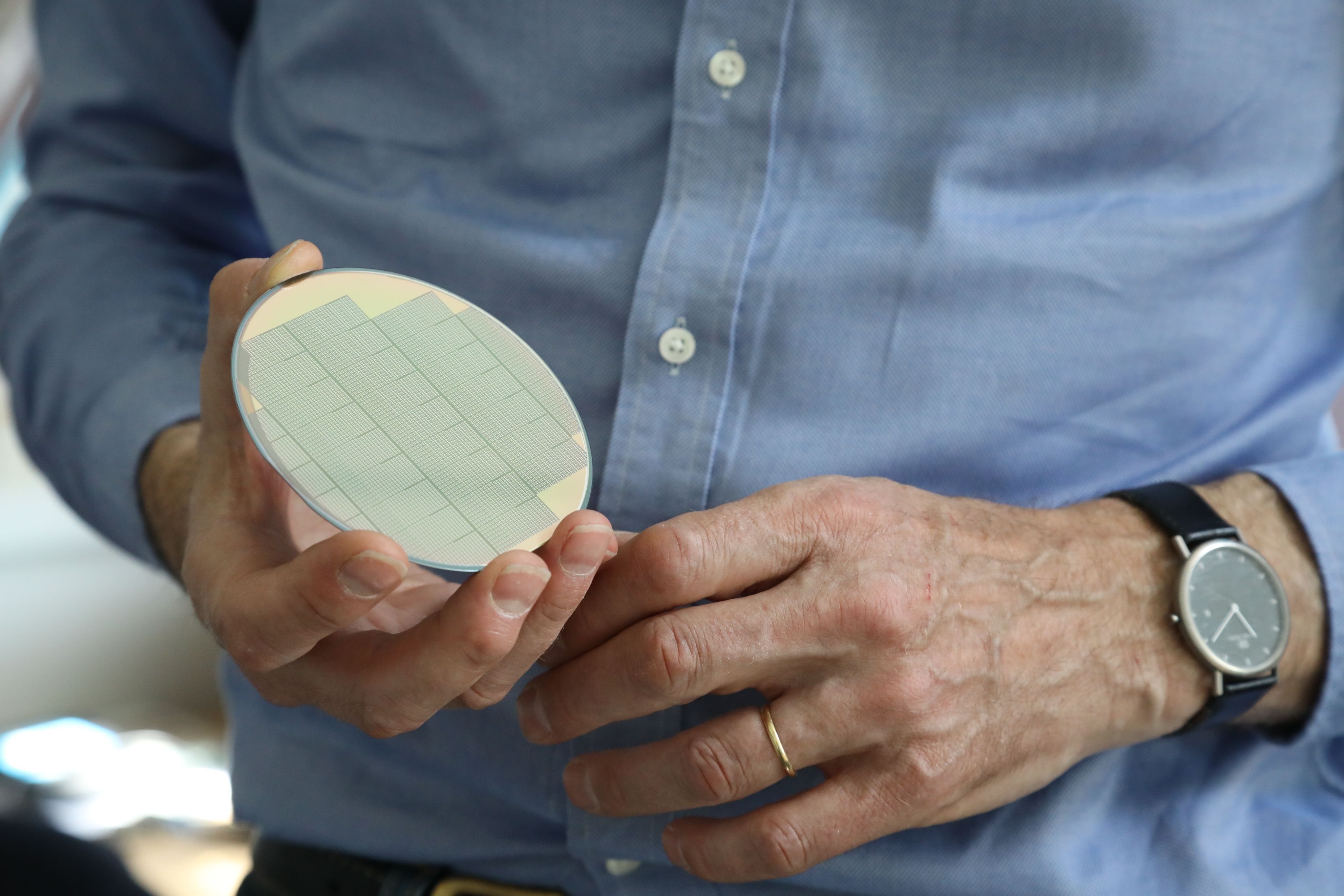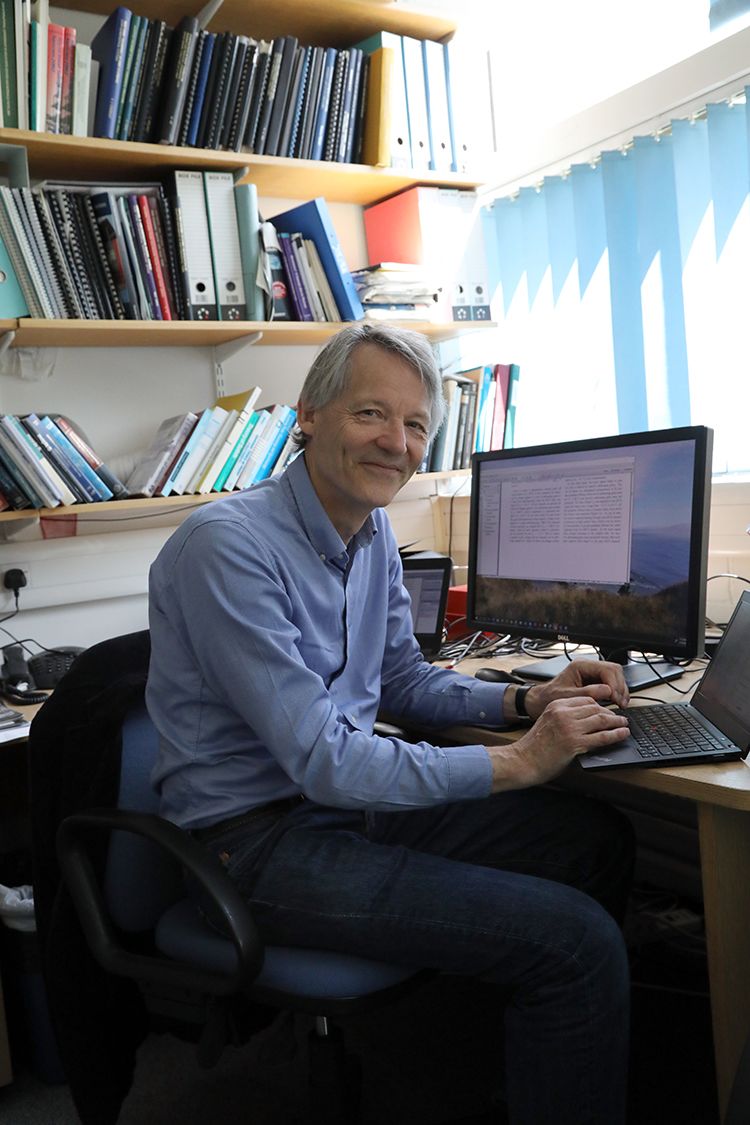Flip the switch
How tiny vibrations in minute metal structures – and a little bit of luck – helped make mobile phones faster and more efficient.

Impact at a glance
- Research from Professor Charles Smith at Cambridge’s Cavendish Laboratory led to the formation of spin-out company Cavendish Kinetics and the development of digital variable capacitors for mobile phones.
- The technology, used in more than 35 million phones, increases the speed at which data can be sent and received.
- It also reduces the power required to send and receive signals, increasing efficiency by 100% versus broadband antennas; and significantly reduces CO2 emissions by an estimated 2 million Kg of CO2 emissions per year.
- Between 2014 and 2019, the company had a total turnover of $17 million, and employed 52 people. The company was acquired by Qorvo Inc in 2019 for $300 million.
Good vibrations

Fundamental, curiosity-led research often ends up in a place that you didn’t expect. As a PhD student at the Cavendish Laboratory, Professor Charles Smith worked on developing tiny, freestanding metal structures to study the behaviour of phonons – lattice vibrations that carry heat through insulators.
In the decades since, those little metal structures led to the realisation that they could be used to make tiny switches, which resulted in the formation of a spin-out company, which helped make the phones in our pockets faster and more efficient.
“During my PhD, I developed these tiny little devices, about 10 to 50 nanometres wide and 10 nanometres thick,” said Smith. “We found that if you cooled the substrate way down, the phonons freeze out across the wire and become a one-dimensional thermal conductivity system.”
At the same time, other researchers were working on the development and improvement of micro-electrical mechanical switches, or MEMS.
“After my PhD, I realised that these two things together, the freestanding wires and MEMS, could have a lot of potential uses as tiny low voltage switches,” said Smith. “The switches could also be made into memory devices. This was quite similar to flash memory, but our approach used far less power: just a few volts, compared to flash memory which used tens of volts.”
After carrying out a series of experiments to test his idea, Smith decided to form a company, Cavendish Kinetics, in 1994.

Start-ups and luck

“With start-ups, there's an awful lot of luck involved,” said Smith. “I presented the idea to a venture capitalist, who turned me down, but on my way out the door, I was approached by another person who said she was going to London the next day and wanted to pitch it to another investor. And that investor said yes, which got us off the ground.”
In its first decade and a half, Cavendish Kinetics developed its switches for computer memory applications, but in the early 2010s, the company needed to pivot.
“We were competing with the juggernaut that was flash memory, and it was running away from us,” said Smith. “But at the same time, mobile phones were getting more powerful, and they needed to be able to handle multiple frequencies, which gave us a new opportunity.”
Around 2011, 4G was introduced for smartphones. Because data could now be split between more than one frequency band during upload and download, data transmission speeds got much faster.
However, 4G also brought in a new set of challenges for the smartphone industry. A phone only has enough room for one fixed antenna. Ideally, the antenna would only work with one frequency, but because the phone is sending and receiving large amounts of data, the antenna needs tuning to a range of different frequencies or bands. In addition, different countries use different bands, so a 4G phone must work across a wide range of frequencies. With the current rollout of 5G, this range has increased.
To get around the 4G problem, phone manufacturers use variable capacitors – devices used to store electric charge, consisting of one or more pairs of conductors separated by an insulator – connected to the antenna to tune them to work at different frequencies. In the past, this was achieved with gallium arsenide switches (GaAs) connected to fixed capacitors.
This combination is expensive, first because the switches need to operate signals up to several gigahertz without distorting the signal or damping the resonance; and second, because they must also be extremely linear to avoid producing competing harmonic signals that swamp the receiver.

Switching gears

“There was suddenly a demand for capacitors, which were a cheaper way of switching between frequency bands than the semiconductor switches that phone manufacturers were using,” said Smith. “Around that time, we figured out that we could make our MEMS switches into capacitors, and by 2014, we had changed our product from a memory device to a digital variable capacitor device.”
The purpose of the new product was to replace the expensive GaAs switches used as variable capacitors in mobile phones with low-cost MEMS alternatives.
In addition to its lower cost, lower power consumption, and ability to handle higher data rates, the capacitor developed by Cavendish Kinetics could also be made in a standard silicon foundry, often called a ‘fab’.
“One of the issues with MEMS switches is that they are sensitive to dirt and humidity,” said Smith. “But we developed a way of making our capacitors so that they were completely sealed. Using a fab, we could deposit all the layers we needed and package it up, all within the same fabrication tool, so that the capacitors never come in contact with the air.”
The new product worked remarkably well: it could be switched more than a billion times without any drop in performance, and there was no issue with drift. And because the chip can tune the antenna to different frequencies, it overcame the so-called head-hand problem, which describes the drop in performance that can occur when the user’s head changes the resonant frequency of the antenna.
The company began making its new product at a fab in San Diego. “We started slowly, with some of the smaller manufacturers, and then Samsung took it on for one of their phones,” said Smith. “It ended up being used in tens of millions of phones.”
Between 2014 and 2019, Cavendish Kinetics had a turnover in excess of $17 million, and employed more than 50 people in the UK, USA, the Netherlands and South Korea.
In 2019, the company was acquired by the American semiconductor company Qorvo Inc for $300 million. Today, the technology is still owned by Qorvo, which designs and manufactures RF (radiofrequency) solutions for wireless and broadband communications.
“It took a long time to get the physics right, and to make sure we had a really good understanding of what worked, what didn’t work, and why,” said Smith. “There are lots of different ways that MEMS devices can go wrong, but we managed to get it right.”

Published 20 July 2022
Photographs of Charles Smith by
Jacqueline Garget
The text in this work is licensed under a Creative Commons Attribution 4.0 International License

